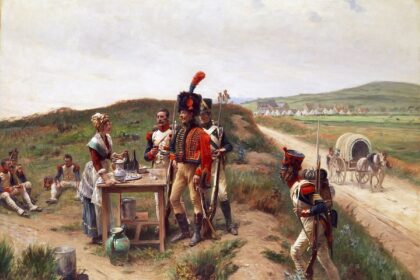The French Civil Code was enacted as the first of a series of foundational legal laws known collectively as the Napoleonic Code. The Napoleonic Code, which was enacted on March 21, 1804, set out to do one thing and do it well: make the law explicit and in writing so that everyone could understand their position under the law. It was popularized in Latin America after being accepted in numerous European nations during Napoleon‘s conquests. Although it has been modified to reflect changes in French society, it remains the foundation upon which the country’s civil law is built.
The impossible reform
After several failed efforts throughout the Ancien Régime and the French Revolution, the Civil Code finally succeeded in codifying social and familial ties. The necessity for a unified body of law has been becoming more obvious ever since the writing of the customs was first attempted in 1454 and finally finished in 1606. The Code Henry (1579-1587) under Henry III and the Code Michau (1629) under Louis XIII were both washed away because they were too hesitant, too isolated, and because they mixed some private law with public law.

It wasn’t until Colbert’s great ordinances that a stable legal framework was put in place. Other codes supervised trade (1673), the fleet (1681), and activity in the colonies in addition to the Code Louis (1667 civil ordinance and 1670 criminal ordinance). Thanks to Chancellor d’Aguesseau’s legislative efforts in the 18th century (1747), ordinances regarding contributions (1731), wills (1735), and civil and criminal proceedings were enacted. Thus, the Revolutionary administrations had access to a wealth of information and literature from which to draw ideas and guidance. However, despite the assurances of each new administration and, on occasion, the creation of drafting commissions, the effort ultimately failed.
Bonaparte himself oversaw the execution of this endeavor because he considered it crucial to the success of his dictatorship and considered it to be one of the “granite masses” upon which it might be built.
The Civil Code of 1804
It wasn’t until after the French Revolution in 1789 that the unified French civil law, which had been founded on a patchwork of local traditions, began to take form, as was demanded by the Enlightenment thinkers. Then Cambaceres took up the mission, but he failed due to the political unpredictability of the period. A committee of four jurists (Portalis, Tronchet, Maleville, and Bigot de Préameneu) could not be formed until the coup d’état of the 19 Brumaire, which was how General Bonaparte set up the Consulate. To that end, Cambaceres has been tapped to take the helm. The First Consul’s intervention was frequent, and his often quite conservative opinions on the articles’ content were ultimately accepted.
A straightforward and succinct writing style means that the 2281 pieces may be drafted in only four months. After that, they were examined at length at over a hundred meetings of the Conseil d’État, of which Napoleon presided over half. Napoleon Bonaparte, France’s First Consul, issued the French Civil Code on March 21, 1804. It was renamed the Code Napoleon in 1807. Three volumes make up the Civil Code: those dealing with property, individuals, and contracts. The Civil Code was an innovation in both style and content. It upholds three fundamental principles: the uniqueness of the legal source (people’s sovereignty); the separation of law and politics; and the unity and universality of law. Its widespread popularity may be attributed in large part to the clear, straightforward language in which it was written. Outlining broad concepts leaves room for the development of precedent and further clarification of the law by the courts.
The Civil Code, a compromise between Roman law and revolutionary law, recognized the primacy of property rights, kept the State secular, protected religious freedom, and guaranteed the ability to choose one’s occupation. It’s official proof that feudalism was dead and the seigniorial system of land ownership was finished. In addition, the regulation of civil status, the de-sacralization of marriage, and the legalization of divorce were all essential. Conversely, the father’s and husband’s traditional roles within the family were reinstated. Without his permission, she was unable to manage her finances or pursue a career path of her choosing.
Wide dissemination of the Napoleonic Code throughout the world
The Napoleonic Wars did much to spread the civil code across the nations that were invaded. So, during the 19th century, countries like Italy, Spain, Portugal, Belgium, and the Netherlands adopted codes substantially influenced by the new French legal methods. This spread will reach the rest of the globe in the countries influenced by Europe or those born out of colonial powers (Egypt, Brazil, Bolivia, Peru, Senegal, Quebec…). Some instances will see “in extenso” adoption of this. When necessary, it will be modified to fit local norms.
The liberal ideas behind and widespread support for the Napoleonic Code will be essential in the development of the European Union in the future. Napoleon accomplished posthumously with his civil code what he could not do during battle. While in exile on St. Helena, the ousted emperor wrote:
My real pride was not in having won forty wars; Waterloo will obliterate the memory of so many wins. My Civil Code is something that will carry on in perpetuity and cannot be destroyed.
The Napoleonic Code was still the basis of French civil law, even if the language had been extensively revised since the Third Republic.






